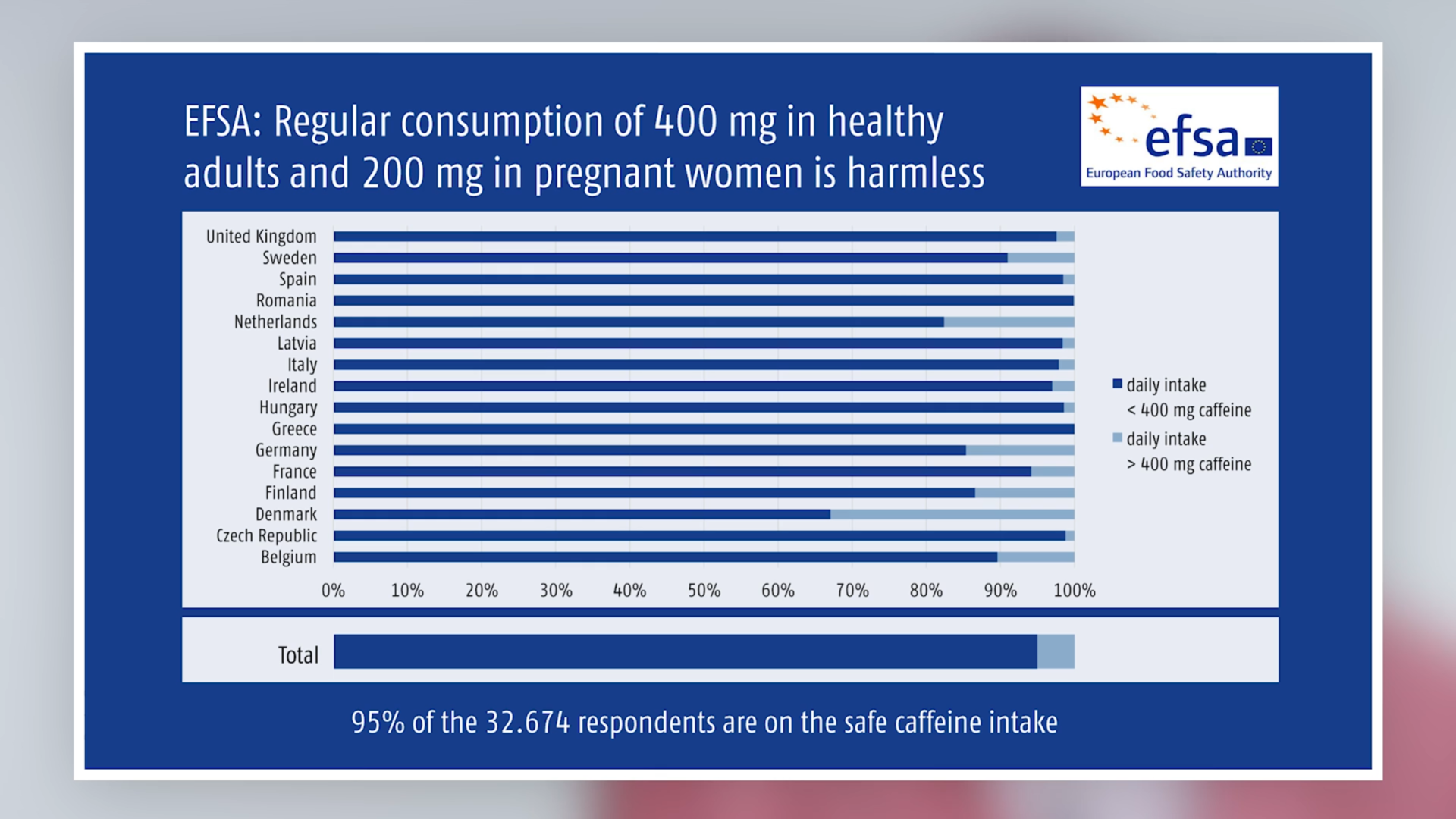 Great Britain
Great BritainAnalgesics with effect enhancers – combination analgesics with caffeine
There is a long tradition of combining drugs with different mechanisms of action. As early as the beginning of the 20th century, the pharmacologist Emil Bürgi published papers on the targeted combination of active substances and in 1938 he wrote the German book “Medicinal Drug Combinations”. Even at that time, painkillers containing the co-analgesic caffeine in addition to an analgesic were already on the market.
Pain relief in common pain conditions
A review by the Cochrane Collaboration compared the analgesic effect of a common analgesic with a combination of the analgesic and caffeine [1]. The authors assessed 25 studies with a total of 4262 participants. In all pain conditions investigated, the addition of caffeine significantly increased the proportion of patients who experienced effective pain relief (see Figure 1):
- 48% of participants reported at least 50% of the maximum possible pain relief after taking the combination of analgesic plus caffeine (1033 of 2136; range 26% to 83%).
- 41% of participants reported at least 50% of the maximum possible pain relief after taking the analgesic without caffeine (877 of 2126; range 6% to 66%).
- The RR for the combination of analgesic plus caffeine was 1.2 (95% CI 1.1 to 1.3) and the NNT was 14 (9.9 to 24).
Figure 1: In all pain conditions investigated, the addition of caffeine significantly increased the proportion of patients who experienced effective pain relief
Pain relief even more marked in the case of migraine or tension-type headache
The positive effect on pain reduction was even greater when headache pain (migraine and tension-type headache) was considered:
- 33% of participants reported at least 50% of maximum possible pain relief after taking the analgesic plus caffeine combination (242 of 740; range 25% to 83%).
- 25% of participants reported at least 50% of maximum possible pain relief after taking the analgesic without caffeine (172 of 763; range 21% to 43%).
- RR for the combination of analgesic plus caffeine was 1.3 (95% CI 1.1 to 1.5) and the NNT was 13 (8.3 to 34).
There was also a clear difference in postoperative pain, where the positive effect on pain relief was 60% versus 51%.
Figure 2: Caffeine-containing analgesics also showed greatly improved pain relief in relation to headache.
How does the amount of caffeine added affect the action?
In the studies considered, caffeine was added as co-analgesic in doses of 50 to 260 mg. Most studies used a caffeine addition of 100 to 200 mg per dose. Only one study investigated a variable amount of caffeine added to a 200 mg dose of ibuprofen. This study showed the same results as were also noted in the others: caffeine doses of 65 mg or less appeared not to improve the analgesic effect, whereas doses of 100 to 200 mg produced markedly improved pain relief. This observation is also reflected in the dosage of current standard combination preparations, most of which contain 100 mg caffeine.
How well-tolerated are these combination preparations?
The authors of this Cochrane Review of 25 studies found no reports of serious adverse events related to the analgesic or to caffeine. They therefore came to the same conclusion as the European Food Safety Authority (EFSA) whose assessment regarded a harmful effect through the addition of caffeine to an analgesic as improbable – provided the recommended dosage is observed.
Summary
Analgesics with caffeine are superior to analgesics without caffeine for acute pain, without displaying a relevant increased risk of side effects!
Literature
- Derry CJ, Derry S., Moore RA. Caffeine as an analgesic adjuvant for acute pain in adults, 2014. doi: 10.1002/14651858.cd009281.pub3.
Conflict of interest: T. Weiser is an employee of Sanofi.
Disclosure: Medical writing and publication funded by Sanofi Aventis Deutschland GmbH.

